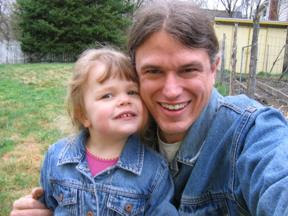As everyone knows, Star Wars is a trilogy of trilogies. There's the Original Trilogy, from 1977. The New Trilogy, from 2015. And, of course, there's the Abomination, from somewhere in between, I'm trying not to remember.
Everybody knows how the Abomination compares to the Original, but how about OT and NT? I'm trying to make up my mind.
At the risk of making my co-workers laugh at me, I had to make a table.
| Original Trilogy | New Trilogy |
| PLUS: Heroic, Epic, Larger-than-life, classic retelling of the Hero's Tale. Deeply rooted in mythology | Epic and heroic, but not the classic "Hero's Tale" (hero--Rey--is absent from the beginning of the story) |
| PLUS: Tight, solid plotting | DING: fractured story-telling. Needlessly unresolved questions. Stellar hopscotch so fast the viewer loses track of what is happening where. Rapid-fire coincidental meetings. |
| DING: Lame, stilted dialogue, mildly whiny hero ("But I wanted to go to the Tashi Station and pick up some power converters!") | PLUS: Strong characters, real feelings and situations. Characters drive story. Solid dialogue. A little more life-size. |
| PLUS: Amazing cinematography | PLUS: Amazing, evocative cinematography. Better picture of poverty and oppression. |
| PLUS: Original, definitive. Star Wars transformed SF for the movies. | DING: Death Star Redux III. A lot of parallel scenes. |
| DING: Cuteness. R2D2 had appeal, the Jawas were slightly creepy, but the teddy bears were over the top. | Cuteness contained. BB-8 had it, and that was enough. |
| Improbable situations and physics, but it's all in good fun. | DING: Silly physics. Silly enough to be distracting. |
Score:
For the Original Trilogy, the Heroic Tale, the mythology, and its original, transformative nature are its greatest hallmarks. The dialogue and, especially in later episodes, cuteness factor are its most famous flaws.For the New Trilogy, the characters, their conflicts and struggles, the vision of the First Order, and the evocative places stand out. It's a shame, therefore, that the frayed plot undermines all this.
Telling the difference between what is a delicious, compelling mystery, and what is an annoying withholding of information can be a tricky call. But there are two simple, basic guidelines:
- Unless mystery and subterfuge is the point of the story, if the heroes know the answer, the viewer should know it.
- If a character has a mysterious background, when others discover it, the viewer should discover it.
The ambiguities build on each other. It appears as if Rey is Ren's sister, but that raises more questions. If not, then we know nothing of her background. If so, then why doesn't she know anything about Han and Leia? It's all so completely unresolved that I even lack confidence it's worth trying to unravel. That is to say, I expect that, when the "mystery" is revealed, any evidence against the revealed truth is simply ignored. J. J. Abrams track record with Lost encourages this view.
The parallel scenes I can forgive, because they felt like tributes more than rehashes. If a funny-looking band had featured in the cantina (as in Return of the Jedi's rehash), if there had been a brawl, if the Yoda-ite had used Object-Subject-Verb word order (or some other odd speech), if the Neo-Death Star's weakness wasn't directly tied in to the uniqueness of its original weapon, this would have annoyed me much more. However, no new twist can really make Death Star Redux III okay. We need a new threat.
The silly physics aren't a bad ding, they're just annoying. They disrupt the story for anyone who thinks about what's going on. You don't need a Ph.D. in physics to wonder how a planet can survive after its sun has been sucked up by the Neo-Death Star, we learned in kindergarten how we need the sun. Anytime your viewers are scratching their heads and saying "Wait, what just happened?" you've interrupted your movie. It's bad story-telling.
The Winner: The Original Trilogy
It's a close call, and a shame, because it wouldn't have taken more than a junior story editor to fix the flaws that undercut the new movie. All the genius of the characters, dialogue, settings, and plot was badly hampered by the shoddy storytelling. Simplify the planet-hopping, make clear what is happening where. Pay attention to the questions you raise, and notice the difference between a mystery and an annoying omission. That part isn't hard. It boggles my brain that Hollywood so often skips the critical, easy parts while creating brilliant bits to flounder in the soup.The New Trilogy is fabulous, and I am eagerly awaiting the next two episodes. I even have hope that Disney will ask JJ Abrams to remake the Abomination episodes, since they own the rights, have no shame about admitting what a disaster they were, and will make tons of money and happy fans if they do. But this movie doesn't displace the original from its iconic top spot.
At least, not yet.

